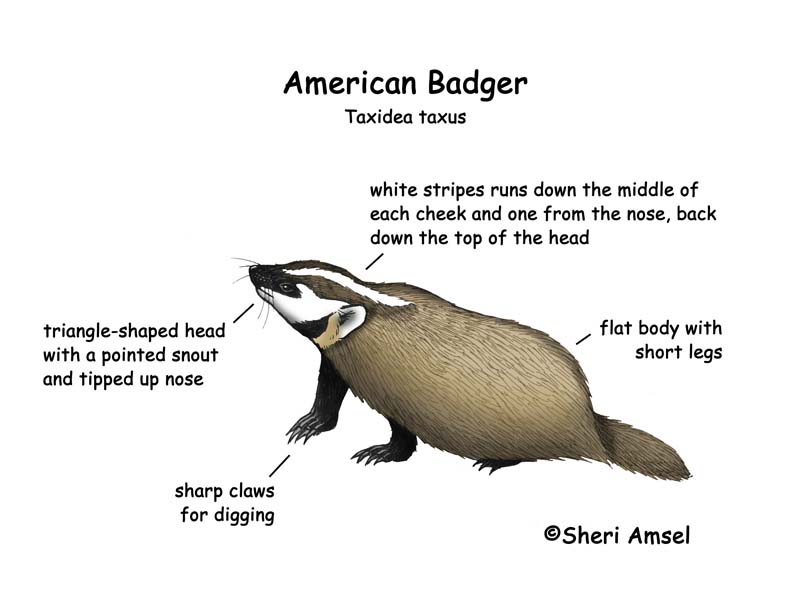


They are found throughout the southern part of central Canada, and in the western to central U.S. to northern Mexico.
They live in open areas like prairies and farmlands and on the edge of woodlands.
They are strong, muscular mammals, weighing up to 25 pounds (12kg) yet are less than 3 feet long. They are brown with white stripes on their triangle-shaped head that run through their cheeks and one from their nose, back to the top of their head. They have a flat body with short legs and long, pointed, snout with a tipped up nose and small ears. They have long, sharp front claws for digging. They have a strong, thick neck with loose fur that allows them to turn and scratch with the sharp claws if they are grabbed on the neck by a predator.
They dig many dens and burrows and use them for sleeping, breeding and storing food. They escape into dens when predators threaten them, often backing in to bare their teeth, hiss and snarl at the entrance. They have an aggressive temperament. Never approach a badger. They are in the weasel (mustelid) family and can emit a smelly odor to repel other animals.
They eat small mammals like squirrels, rats, and mice, also snakes, lizards, and birds. They will dig prey right out of their burrows.
They are so fierce, that they have few predators except man.
Females mate in summer, but have delaying implantation so embryos don’t begin to grow until winter, then are born in March. Litters are 1-5 young.
They live up to 14 years in the wild.
Kingdom: Animalia
Phylum: Chordata
Subphylum: Vertebrata
Class: Mammalia
Order: Carnivora
Suborder: Caniformia
Family: Mustelidae
Subfamily: Mustelinae
Genus: Taxidea
Species: Taxidea taxus
When you research information you must cite the reference. Citing for websites is different from citing from books, magazines and periodicals. The style of citing shown here is from the MLA Style Citations (Modern Language Association).
When citing a WEBSITE the general format is as follows.
Author Last Name, First Name(s). "Title: Subtitle of Part of Web Page, if appropriate." Title: Subtitle: Section of Page if appropriate. Sponsoring/Publishing Agency, If Given. Additional significant descriptive information. Date of Electronic Publication or other Date, such as Last Updated. Day Month Year of access < URL >.
Amsel, Sheri. "Badger (American)" Exploring Nature Educational Resource ©2005-2024. December 15, 2024
< http://www.exploringnature.org/db/view/432/ >
